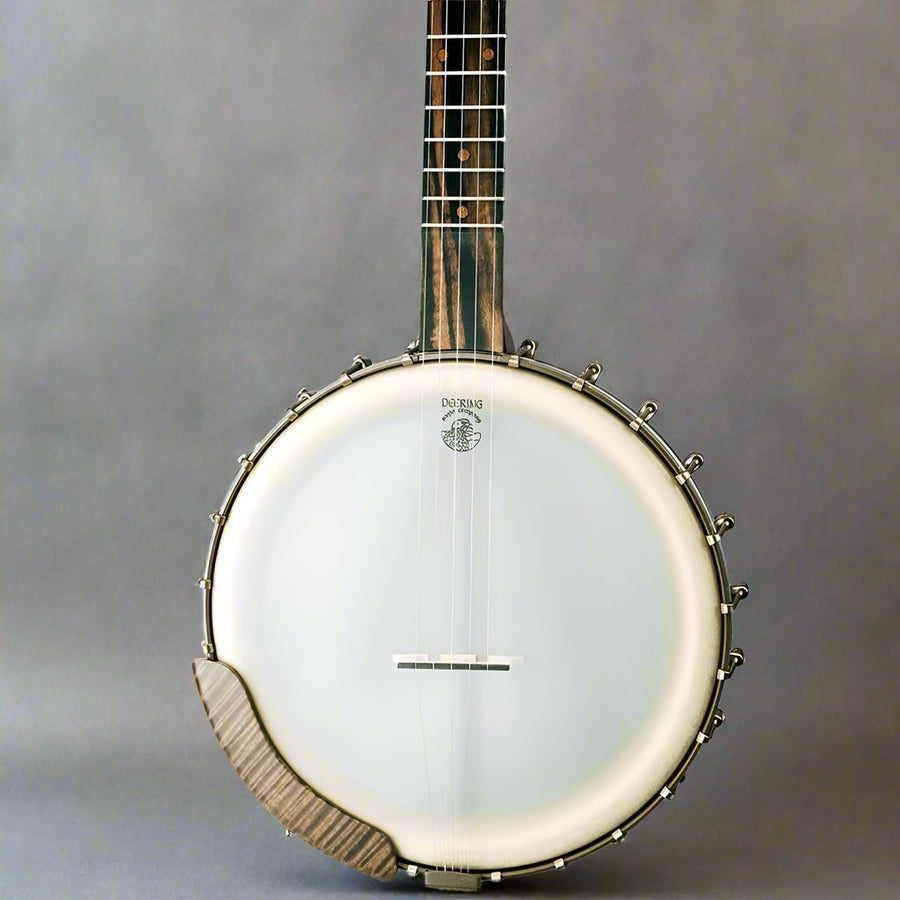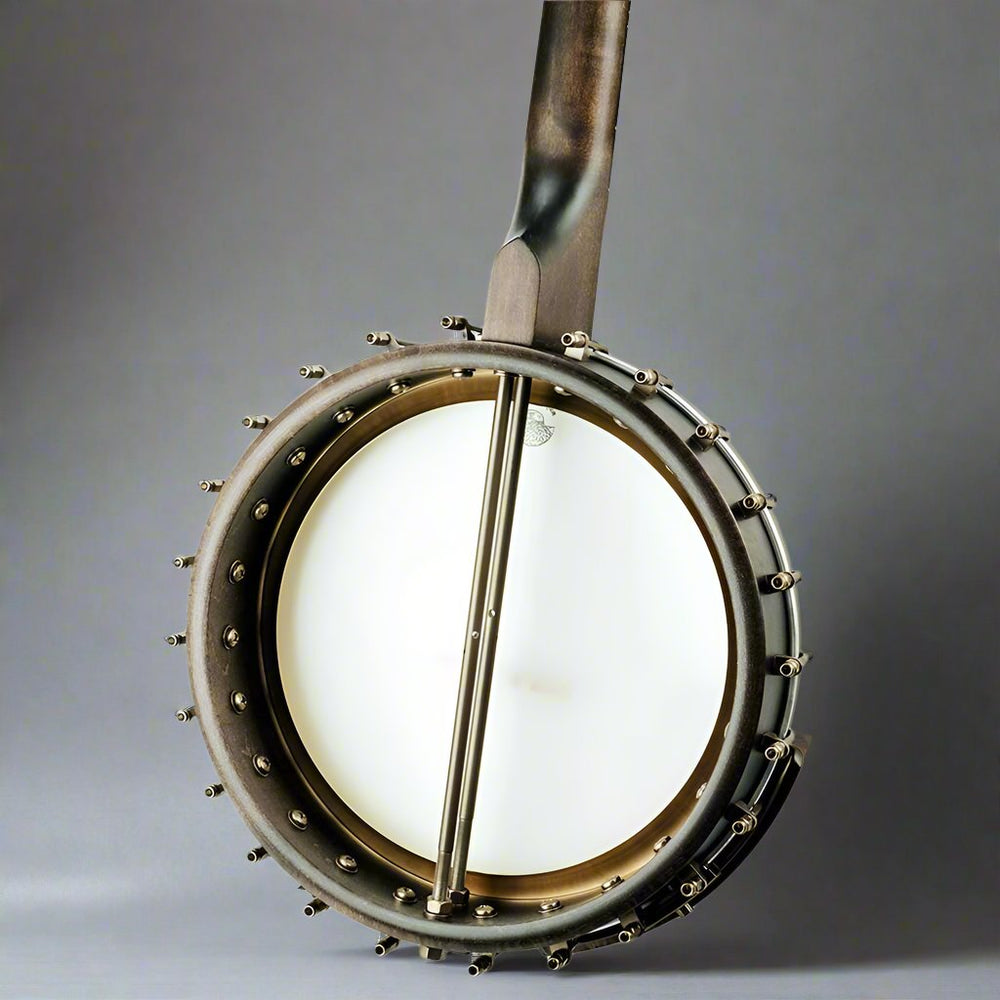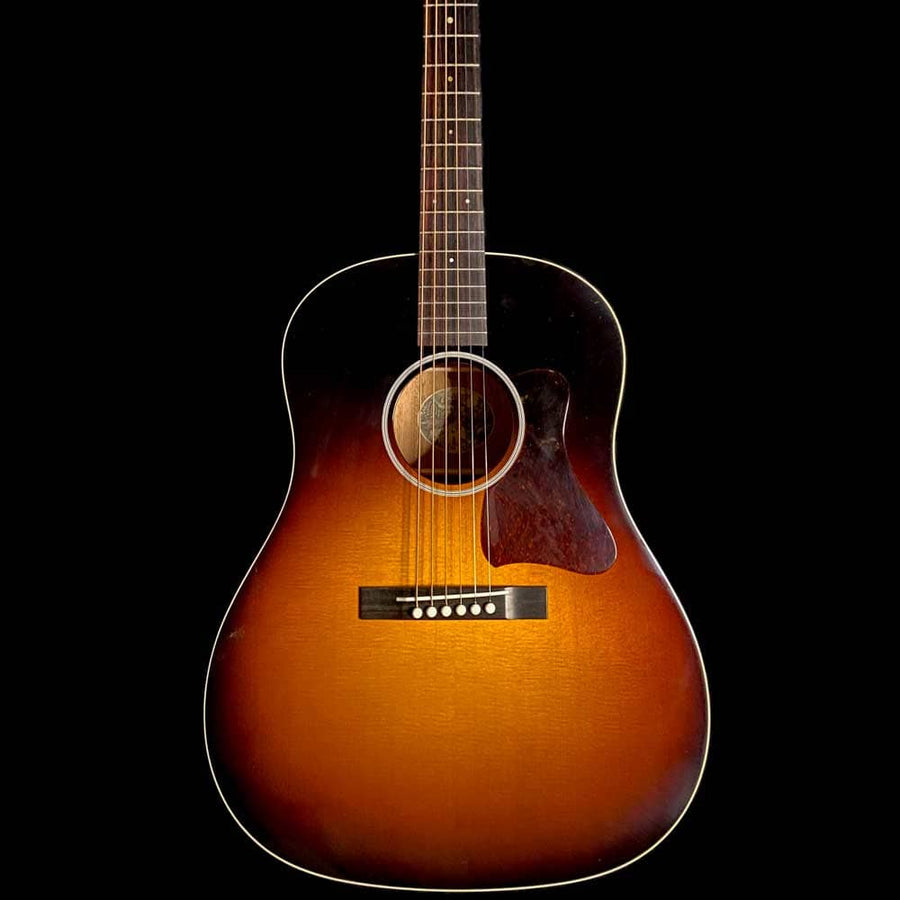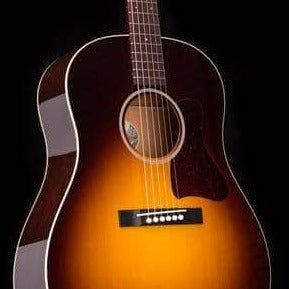10 Myths About Banjo
There are many myths and misconceptions about the banjo. In this piece, we would like to point out some of the most common ones and lay out the facts.
1. The banjo is hard to play
This has got to be the most common one. The 5 string banjo is actually the easiest stringed instrument to get started playing. I routinely go to music festivals and am able to teach groups of people who have never played any musical instrument how to play the banjo in less than 5 minutes. Now we aren’t ready for the Grand Ole Opry after those 5 minutes, but we are playing and singing songs together.
The reason the 5 string banjo is so easy to start playing is that its standard tuning is an open G tuning. This means that when you strum the strings without pushing anything down, you will play a G chord. You then can make a bar with your index or middle finger and push down all of the strings at the 5th fret to make a C chord. Lastly, you can slide that C chord position up the neck 2 frets to the 7th fret to make a D chord. With these 3 chords, and your right hand (if you are right handed) just strumming the strings, you can start playing thousands and thousands of tunes.
2. A Banjo Must Be Heavy To Sound Good
The weight of a banjo does not let you know if it is a good or bad banjo. The weight of a banjo comes from the large metal parts on a banjo (the tone ring and flange). Not all banjos have either of these parts. Most people are associating the weight to the banjo having a tone ring when they say it should be heavy. There are very good banjos that do not have a tone ring. There are also tone rings that are lighter in weight such as the Deering Hartford Grenadillo tone ring. Also, there a number of cheap tone rings that are made of inferior materials and design that sound very poor (these are usually on imported banjos from Asia).
Banjos that have resonators usually have a flange in order to hold the resonator on. The only banjo I can think of that has a resonator and does not have a flange is the Deering John Hartford with a Pop On Resonator.
3. All Banjo Music Is Fast
Some of my favorite banjo music is not fast at all. Great banjoists such as Bela Fleck, Jens Kruger, and Abigail Washburn all have plenty of music that is not fast, but is very good and intricate.
4. Older Banjos Are Better
Yes, there are some great vintage instruments out there. Most of them that play well have been restored by a very good luthier. The majority of vintage banjos that I run into have a lot of issues going on. Also, many people talk about pre war this and that regarding banjos and acoustic guitars.
There was a great age of instrument building at this time, and post WWII and into the 90s, banjo and guitar manufacturing slid backwards. But today we live in what I believe is the golden age of instrument building. There are great banjos and guitars being produced by builders such as Deering, Ome, Romero, Huber, Pisgah, Collings, Bourgeois, Santa Cruz, and more! The best thing about these instruments also is they are new and don’t have the issues associated with older instruments.
5. If It Says Gibson, It Has Got To Be Good
Like the point above, Gibson made some incredible banjos before WWII. They continued to make good instruments through the 50s and into the 60s, but by the time the 70s rolled around, they really started to make some horrible instruments. One of the worst banjos that ever came into our shop was a mid 70s Gibson Mastertone. This banjo was made so poorly, the flange wouldn’t stay on when the head was brought up to tension. Today, Gibson doesn’t even make banjos.
6. The Weight Of A Banjo Comes From The Resonator
We covered most of this in Point #2, but again, the resonator is made of very lightweight wood. What adds the weight is the metal flange that holds the resonator on.
7. You Have To Fingerpick A Banjo
There is no rule that says you can strum a banjo with just your fingers. Haven’t you heard the phrase “strummin the ole banjo”?
8. More Inlays Means It Is A Better Banjo
Many banjo-like objects (cheap imported banjos) put a lot of inlays and other eye candy to attract buyers to buy with their eye and not their ears. Don’t fall for that trap.
9. Real Banjos Have 5 Strings
I hear this all of the time when people are talking about 6 string banjos and even some times when they are talking about 4 string tenor or plectrum banjos. 6 string banjos are real banjos - period. They have been around for over 100 years and have been used in some of the greatest recordings in American music history. New Orleans banjoist Johnny St. Cyr played a 6 string banjo and played on Louis Armstrong’s Hot Five and Hot Seven recordings.
10. You Have To Play Bluegrass On A Banjo
You can play any style of music, on any type of banjo. The great banjoist Bela Fleck has been nominated for more different Grammy categories than any other artist in history. He has written a symphony for the banjo. He plays jazz with greats such as Chick Corea. And yes… he can play bluegrass as well.
You can play whatever style you want. I personally make a living playing jazz on the tenor banjo - but often we get requests for songs that are not not jazz, so I end up playing r&b, blues, Irish, new orleans brass band, country, pop, and more on the banjo!
CONCLUSION:
As we pointed out, there are a number of stereotypes and generalizations about the banjo. Search out the facts - don't always believe what you hear one blowhard in an online forum is saying is true. When it comes to playing, you can do it. Just make sure you have fun and try to sound like yourself. The world does not need another person trying to sound like Earl.
Let us know about any other myths you commonly hear about the banjo in the comments section below.













Leave a comment